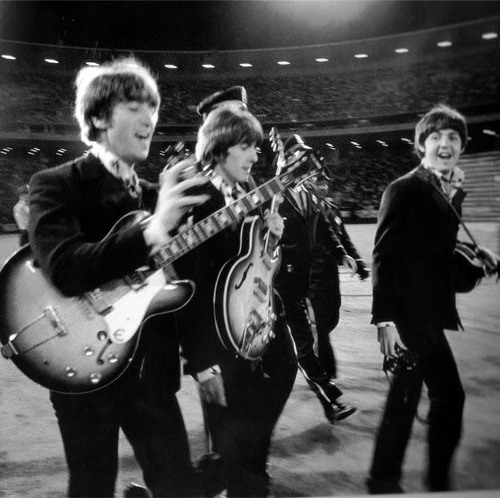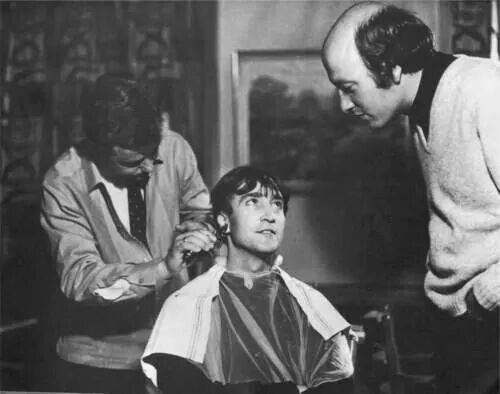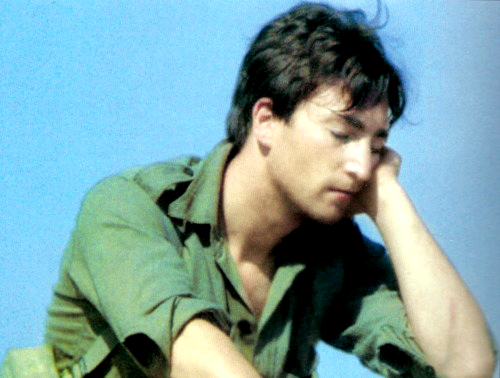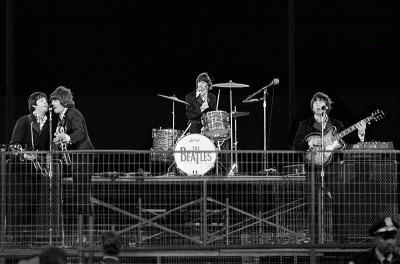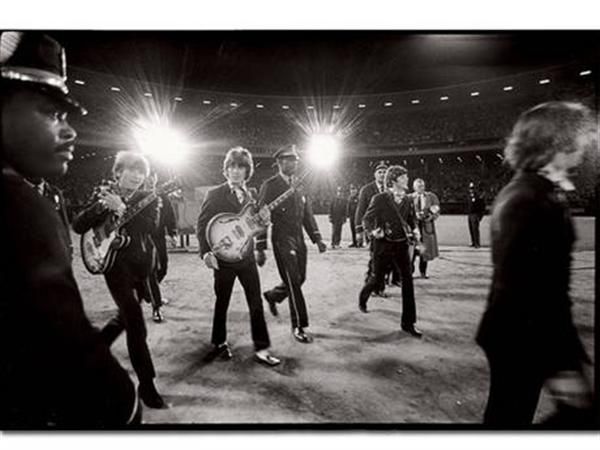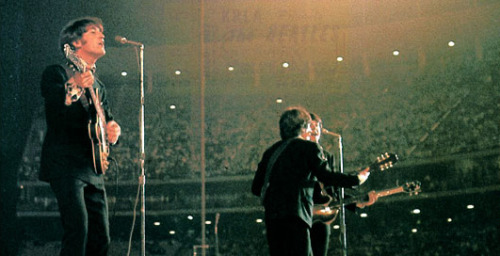The Beatles ended their United States tour on a noisy note of triumph last night, to the cheering adulation of 25,000 screaming worshipers in Candlestick Park.
For 33 minutes they sang their songs from a big, well-guarded stage at the edge of the infield grass as their audience literally shrieked the intensity of its pleasure.
The crowd had been noisy before, applauding the earlier acts on the program, but at 9:27 it really let loose: The moment was at hand. The four musical Englishmen - wearing dark Lincoln-green double-breasted Edwardian suits and open-collared silk shirts - suddenly emerged from the Giants' dugout and ran to the big, fenced-in stage above second base. Bedlam.
They opened with "Rock and Roll Music" and closed with "Long Tall Sally" - singing 11 songs in all before they quit at 10 p.m. And during every moment of it, the Beatles had this peculiar little world squarely in their hands.
And the crowd, although howlingly appreciative, was, at the same time, markedly well-behaved.
During the entire time the Beatles were on the field, there were just three attempts by frenzied fans to reach them:
At 9:40 p.m., a group of about five boys climbed over a fence from the nearly empty center field bleachers and sprinted toward the rear of the infield stage. A covey of private police quickly intercepted them.
At 9:47 p.m., another group of about the same size tried the same tactic over the same route - and with the same result.
And just after 10 p.m. as the Beatles were leaving the stage, a husky disheveled boy jumped onto the field near third base - and put up a rousing battle with four guards before he was subdued.
The weather was pleasant - clear with only sporadic winds and reasonably mild temperatures, although Paul McCartney, in telling the audience goodbye, apologized for the cold.
The fact that the crowd was relatively subdued - in action, if not in noise - was at least in part attributable to the almost unbelievable set of security measures invoked to keep idols and idolators safely apart.
Their stage, for instance, was also a cage. It was a platform elevated 5 feet above the infield surface, and it was surrounded by a metal storm fence 6 feet high.
Police - private and otherwise - were everywhere.
